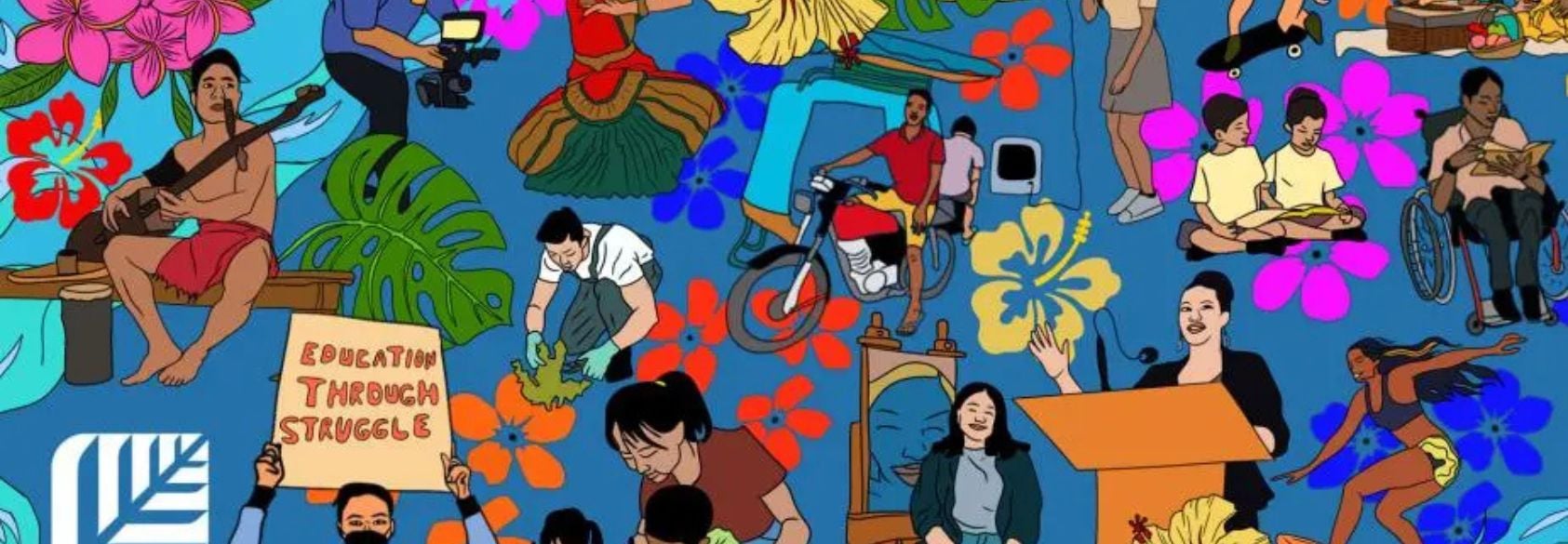New AAPI Textbook Uncovers Untaught Stories
Discover a new AAPI history textbook that brings untold stories into the classroom and helps educators teach a more complete, inclusive U.S. history.

What untold stories of AAPI communities belong in every U.S. classroom?
Share
July 28, 2025
Discover a new AAPI history textbook that brings untold stories into the classroom and helps educators teach a more complete, inclusive U.S. history.
Share
By Bridget Sweeney
Ethnic studies are under attack. Along with any curriculum demonized and dubbed “DEI” (formerly, and more accurately, known as “diversity, equity and inclusion”), the Trump administration is targeting everything from reading lists to history lessons for cuts and systematically eliminating inclusive curriculum and programming from schools.
Does that stop ethnic studies advocates? Absolutely not.
After 50 years of organizing by educators and others to lift up less-told stories and expand the groups of people we celebrate in our country’s history, educators are not ready to go backward. This summer, the UCLA Asian American Studies Center is preparing for the release of Foundations and Futures, a multimedia textbook designed to ensure that every child can learn Asian American, Native Hawaiian and Pacific Islander history. Merging technology with a traditional textbook format, the project aims to “provide the most comprehensive history of Asian Americans and Pacific Islanders,” using rich and compelling stories of AANHPI contributions that have been missing from our classrooms for generations.
“We need young people to know … about the rich contributions AANHPI people have made to this country, from our leadership in the agricultural labor rights movement and our early fights for civil rights to our influence on education and government policy and our inspiring stories of entrepreneurship,” says Arlene Inouye, a retired United Teachers Los Angeles member, an AFT AAPI Task Force member and part of the Foundations and Futures team.
Inouye remembers growing up with a limited understanding of her own Japanese American history—including the fact that members of her family were among the 120,000 people incarcerated just for being Japanese during World War II. And she struggled to live up to the “model minority” myth. To avoid that experience, Foundations and Futures works to generate “historical empathy” and redefine the American narrative.
The 50 chapters of the textbook cover 200 years of history and a diverse range of topics, from the labor activism of Filipino farmworkers to Chinese American civil rights to the role of oral history projects in preserving community stories. Each chapter is divided into smaller modules with a glossary of terms, and there are more than 250 total lesson plans for educators. Online navigation allows users to locate glossary terms in the text, easily move from module to module, and access more than 1,500 multimedia assets embedded in the textbook.
Many of the chapters focus on individual stories as a lens for understanding broader history. For example, we learn that in 1885, Joseph Tape (whose Chinese name was Jeu Dip) sued the San Francisco Board of Education after his 8-year-old daughter was prevented from enrolling in a public school. The state eventually allowed Chinese children to attend public school but created a system of segregation. Then the textbook goes further: We learn more about the Tapes, who, like many Chinese American families of that era, strove to assimilate. They also acted as immigrant brokers, facilitating arrangements between Chinese workers and American employers—and as linguistic and cultural links, they wielded tremendous power.
Another chapter focuses on Korean immigrant Chol Soo Lee, who was wrongfully convicted of a murder in San Francisco, and journalist K. W. Lee, whose articles revealed the truth and started an activism movement that eventually won Chol Soo Lee his freedom.
These stories and others like them have been deeply researched by a development team that includes scholars, writers, educators, students, website developers and others. More than 85 scholars, journalists, filmmakers and community organizers contributed to the project. The team also collaborated with the National Education Association, the Smithsonian Asian Pacific American Center, Densho and the Yuri Education Project.
Sample chapters of Foundations and Futures are online now, and all 50 chapters will be released early 2026, available for high school, college and lifelong learners free of cost.
To access the textbook, click here. To read about the personal experiences that inspired Arlene Inouye to become involved with Foundations and Futures, click here. To keep up with the project, follow @foundationsandfutures on Instagram and Facebook or sign up for the mailing list here.
Want to bring more untold AAPI stories into your classroom? Explore these ready-to-use lessons:
Join the Share My Lesson community in celebrating the generations of Asian and Pacific Islander Americans who have enriched global society, playing a critical role in its development and success. With our wealth of prek-12 digital resources, you and your students can explore the remarkable contributions that AANHPI Americans have given to history, culture, the sciences, industry, government and more.
Republished with permission from AFT.
